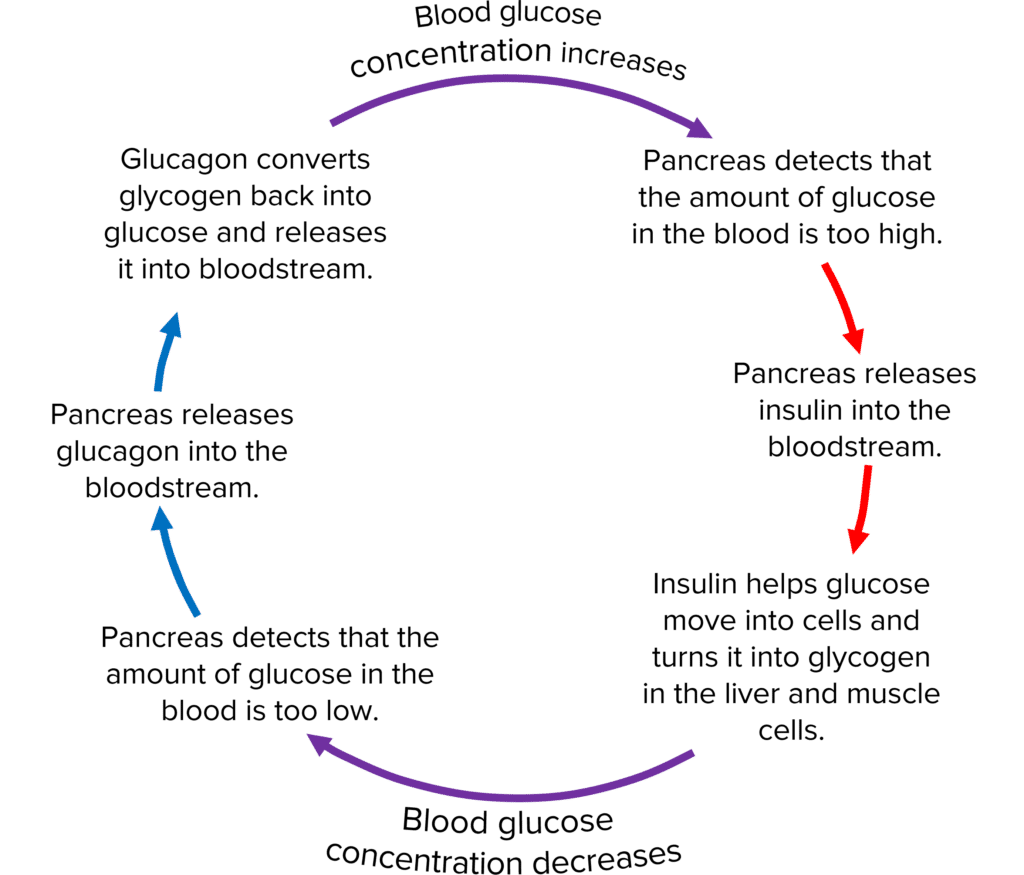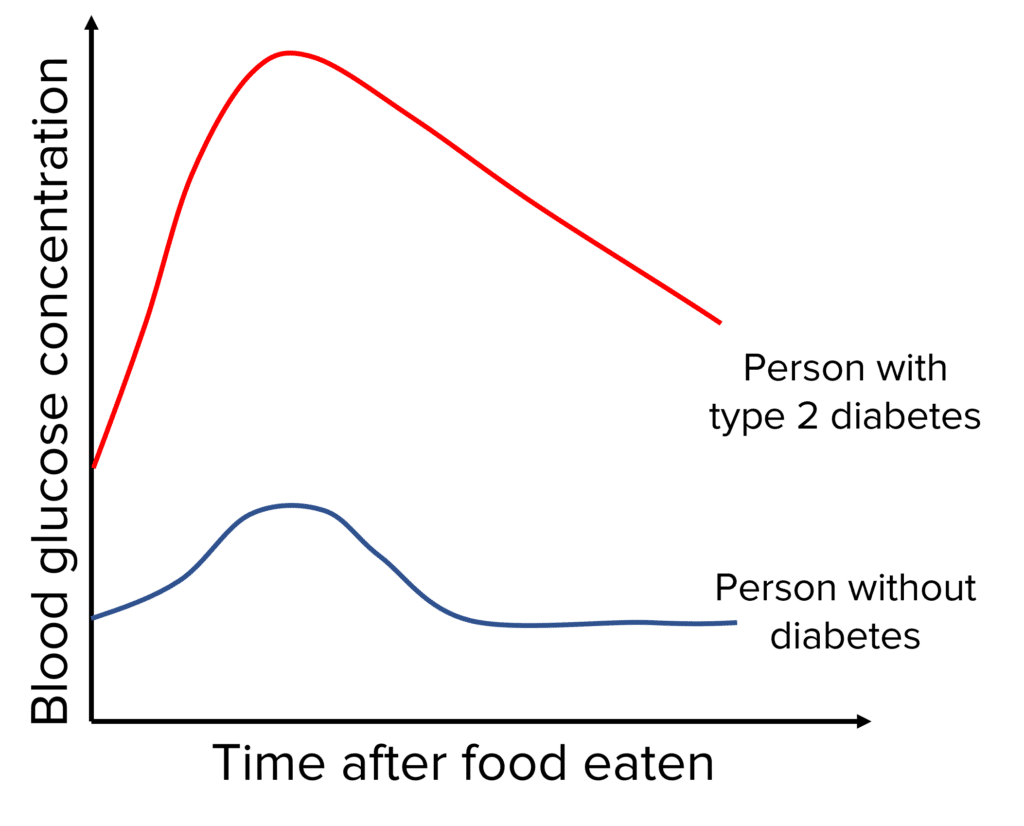Control of Blood Glucose
Control of Blood Glucose Revision
Control of Blood Glucose
As part of homeostasis, the body must control the amount of glucose present in the blood. Glucose enters the body via food, is stored as glycogen and get broken down during respiration. Hormones control the blood glucose concentration in a negative feedback cycle. People with diabetes struggle to regulate their blood glucose levels so may require treatment or have controlled diets.
Insulin
Glucose enters the body as part of carbohydrates in food, gets digested into individual glucose molecules and is absorbed into the bloodstream. Then it is either stored as glycogen in the liver and muscles or used for respiration and other metabolic reactions. When a person exercises, more energy is required and more glucose is removed from the blood for respiration.
The pancreas monitors blood glucose concentration and responds to any changes by releasing hormones.
When blood glucose concentration is too high, the pancreas releases the hormone insulin.
Insulin causes glucose to move out of the blood and into the surrounding cells. It also converts glucose into glycogen in the liver and muscle cells where it can be stored until more glucose is required.
Glucagon and Negative Feedback
When blood glucose levels are too low, the pancreas releases the hormone glucagon. Glucagon turns glycogen in the liver back to glucose. The glucose is then released into the bloodstream and the blood glucose concentration increases again.

The interaction between insulin and glucagon creates a negative feedback cycle:
- The pancreas detects that the blood glucose concentration is too high or too low.
- The pancreas releases hormones in response- insulin if there is too much glucose and glucagon if there is too little glucose.
- Insulin helps glucose move into cells and converts it into glycogen, decreasing the blood glucose concentration back to a normal amount. Glucagon converts glycogen back to glucose which gets released into the bloodstream, increasing the blood glucose concentration to a normal amount.
Diabetes
People with diabetes struggle to maintain their blood glucose (sugar) levels.
Type 1 diabetes
- Pancreas produces very little insulin or produces none at all.
- This causes uncontrolled high blood sugar levels and can be fatal.
- Patients can be treated with regular insulin injections (mainly after food).
- This helps to reduce the amount of glucose in the blood.
Type 2 diabetes

- Pancreas produces insulin but body cells no longer respond to it- they are resistant.
- This causes uncontrolled high blood sugar levels and can be dangerous.
- Type 2 diabetes is often controlled with strict carbohydrate-controlled diets and taking regular exercise.
- Obesity is a risk factor for type 2 diabetes.
- This is thought to be because obese people usually consume higher amounts of carbohydrates so produce more insulin and causes body cells to develop resistance.
- The graph on the right shows how people with type 2 diabetes will struggle to keep their blood glucose levels down after eating the same food as a person without the disease- glucose moves into cells much slower causing a build up in the bloodstream.
Control of Blood Glucose Example Questions
Question 1: How does the pancreas stop blood glucose levels from becoming too high?
[3 marks]
- The pancreas detects when the blood glucose level is increasing.
- It releases insulin into the bloodstream.
- This causes glucose to move into cells and get converted into glycogen, reducing blood glucose levels.
Question 2: What is the role of glucagon?
[1 mark]
Glucagon is a hormone that converts glycogen back into glucose.
Question 3: Describe the treatments for type 1 and type 2 diabetes.
[2 marks]
Type 1: Insulin injections.
Type 2: Carbohydrate controlled diets and exercise.
Control of Blood Glucose Worksheet and Example Questions
Control of Blood Glucose Concentration Questions
GCSEOfficial MME
MME Premium Membership
£19.99
/monthLearn an entire GCSE course for maths, English and science on the most comprehensive online learning platform. With revision explainer videos & notes, practice questions, topic tests and full mock exams for each topic on every course, it’s easy to Learn and Revise with the MME Learning Portal.
Sign Up Now



